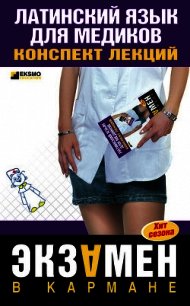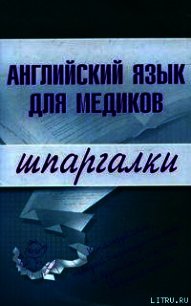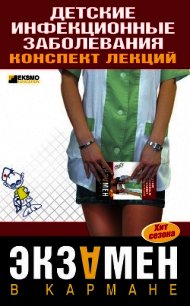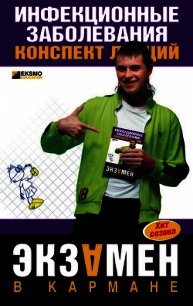Английский язык для медиков: конспект лекций - Беликова Елена (книги хорошего качества TXT) 📗
ЛЕКЦИЯ № 23. Respiratory system
The respiratory system is structurally and functionally adapt ed for the efficient transfer of gases between the ambient air and the bloodstream as well as between the bloodstream and the tissues. The major functional components of the res piratory system are: the airways, alveoli, and blood vessels of the lungs; the tissues of the chest wall and diaphragm; the systemic blood vessels; red blood cells and plasma; and respi ratory control neurons in the brainstem and their sensory and motor connections. LUNG FUNCTION: provision of O2 for tissue metabolism occurs via four mechanisms. Ventilation – the transport of air from the environment to the gas exchange surface in the alveoli. O2 diffusion from the alveolar air space across the alveolar-capillary membranes to the blood.
Transport of O2 by the blood to the tissues: O2 diffusion from the blood to the tissues.
Removal of CO2 produced by tissue metabolism occurs via four mechanisms. CO2 diffusion from the tissues to the blood.
Transport by the blood to the pulmonary capillary-alveolar membrane.
CO2 diffusion across the capillary-alveolar membrane to the air spaces of the alveoli. Ventilation – the transport of alveolar gas to the air. Functional components: Conducting airways (conducting zone; anatomical dead space).
These airways are concerned only with the transport of gas, not with gas exchange with the blood.
They are thick-walled, branching, cylindrical structures with ciliated epithelial cells, goblet cells, smooth muscle cells. Clara cells, mucous glands, and (sometimes) cartilage.
Alveoli and alveolar septa (respiratory zone; lung parenchyma).
These are the sites of gas exchange.
Cell types include: Type I and II epithelial cells, alveolar macrophages.
The blood-gas barrier (pulmonary capillary-alveolar membrane) is ideal for gas exchange because it is very thin (‹0,5 mm) and has a very large surface area (50-100 m2). It consists of alveolar epithelium, basement membrane interstitium, and capillary endothelium.
New words
respiratory – дыхательный
structurally – структурно
functionally – функционально
adapted – приспособленный
efficient – эффективный
transfer – перемещение
gases – газы
ambient – окружающий
air – воздух
bloodstream – кровоток
airways – воздушные пути
alveoli – альвеолы
blood vessels – кровеносные сосуды
lungs – легкие
chest – грудь
diaphragm – диафрагма
the systemic blood vessels – системные кровеносные сосуды
red blood cells – красные кровяные клетки plasma – плазма
respi ratory control neurons – дыхательные нейроны контроля
brainstem – ствол мозга
sensory – сенсорный
motor connections – моторные связи
ventilation – вентиляция
transport – транспортировка
environment exchange – окружающая среда
surface – поверхность
Запомните!
Един. ч. – множ. ч.
this is – these are
that is – those are
there is – there are
it is – they are
Поставьте слова в следующих предложениях во множественное число.
1. This is a star.
2. This is a boy.
3. This is a baby.
4. That is a plate.
5. That is a flower.
6. That is a bookshelf.
7. Is this a sofa?
8. Is this a bookcase?
9. Is this a man?
10. Is that a ball?
11. Is that a train?
12. Is that a plane?
13. Is the window open?
14. Is the door closed?
15. Is the boy near the window?
16. That is not a king.
17. That is not a queen.
18. That is not a bus.
19. That isn't a mountain.
20. That isn't a goose.
21. This isn't a mouse.
22. It is a sheep.
23. It is a cigarette.
24. It is a cat.
25. It is not a girl.
26. It isn't a bag.
27. It isn't a tree.
28. It is not a bad egg.
29. It is a good egg.
30. Is that a flower?
31. This man is an engineer.
32. That woman is my sister.
33. This child is my son.
34. That goose is big.
35. This mouse is white.
36. This man is a doctor.
37. That woman is my cousin. She is a teacher
38. That girl is my niece. She is a pupil.
39. This girl has a blue sweater.
40. This boy has a good coat.
41. My uncle has a large flat.
42. There is a table in the room.
43. I have a good pen. My pen is in my pocket.
44. There is a flower in the vase.
45. This child's foot is sore.
Answer he questions.
1. What is the respiratory system structurally adopted?
2. What does the respiratory system transfer?
3. What are the most major lung functions?
4. What do we breath in?
5. What do we breath out?
6. How is the oxygen delivered to the organs?
7. How is oxygen delivered to the organs?
8. What is metabolism?
9. What are the functional components?
10. What do cell types include?
Make the sentences of your own using the new words (10 sentences).
Find plural and single in the text.
Find one word, which is a little bit different in meaning from others (найдите одно слово, которое немного отличается от других по смыслу):
1. a) palm; b) blood; c) vessel;
2. a) leg; b) tissue; c) metabolism;
3. a) airways; b) alveoli; c) arm;
4. a) intestines; b) cell; c) membrane;
5. a) oxygen; b) breath; c) carbon.
ЛЕКЦИЯ № 24. Lung volumes and capacities
Lung volumes – there are four lung volumes, which when added together, equal the maximal volume of the lungs. Tidal volume is the volume of one inspired or expected normal breath (average human = = 0,5 L per breath). Inspiratory reserve volume is the volume of air that can be inspired in excess of the tidal volume. Expiratory reserve volume is the extra an that can be expired after a normal tidal expiration.
Residual volume is the volume of gas that re lungs after maximal expiration (average human = 1,2 L).
Lung capacities are comprised of two or more of the lung volumes. Total lung capacity is the volume of gas that can be con tained within the maximally inflated lungs (average human = 6 L).
Vital capacity is the maximal volume that can be expelled after maximal inspiration (average human = 4,8 L).
Functional residual capacity is the volume remaining in the lungs at the end of a normal tidal expiration (average luman = 2,2 L).
Inspiratory capacity is the volume that can be taken into the lungs after maximal inspiration following expiration of a normal breath. Residual volume can not be directly measured by spirometry. Because FRC and TLC include the residual capacity, they can not be directly measured by spirometry either. Helium dilution techniques are used to determine these capacities. A forced vital capacity is obtained when a subject inspires maximally and then exhales as forcefully and as completely as possible. The forced expiratory volume (FEV1) is the volume of air exhaled in the first second. Typically, the FEV1 is approximate 80% of the FVC. In obstructive lung diseases, such as bronchial asthma, the FEV1 is reduced much more that the FVC, producing a to FEV1 / FVC. In restrictive lung diseases, such as pulmonary fibro-sis, both the FEV1, and the FVC are reduced. This characteristically produces a normal or increased FEV1/ FVC.




